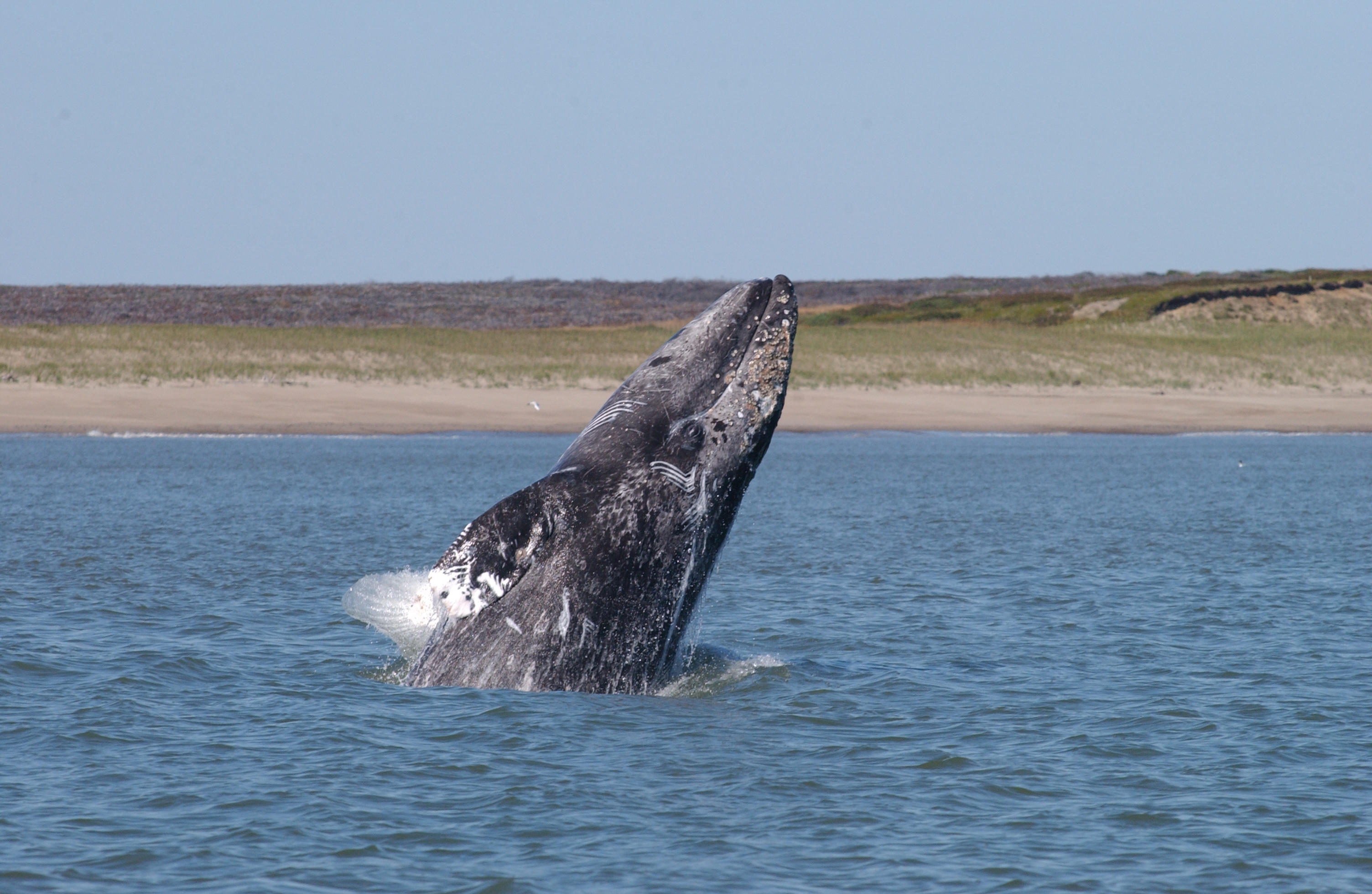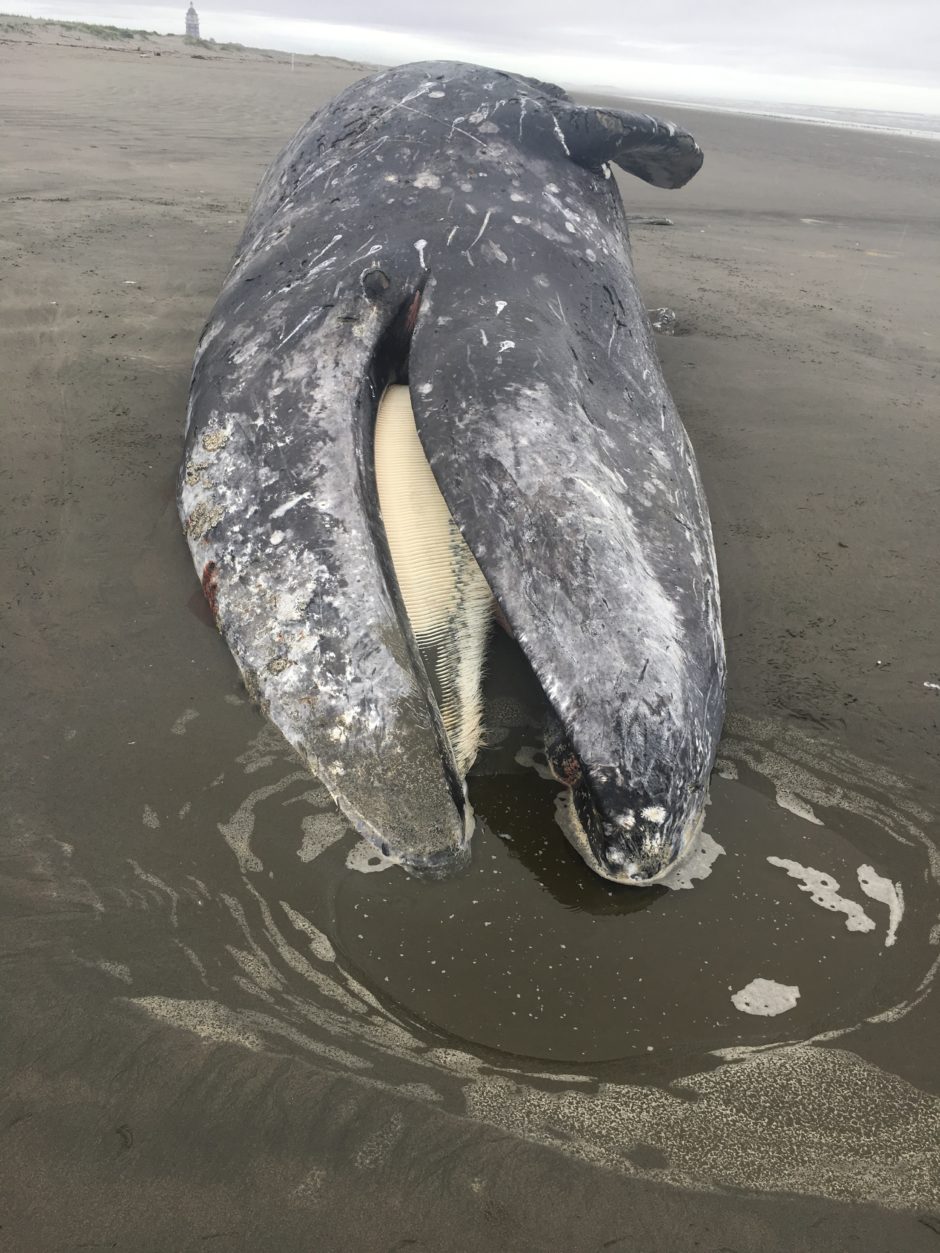December 28, 2019
The first grey whale found dead in B.C. last year was in such rough shape that its tail had turned pink. It looked as though it was covered in foam.
The pink wasn’t anything artificial, officials learned when they arrived to tow the skinny male to shore near Victoria for a necropsy last April.
It was the animal’s own flesh, eaten raw by whale lice.
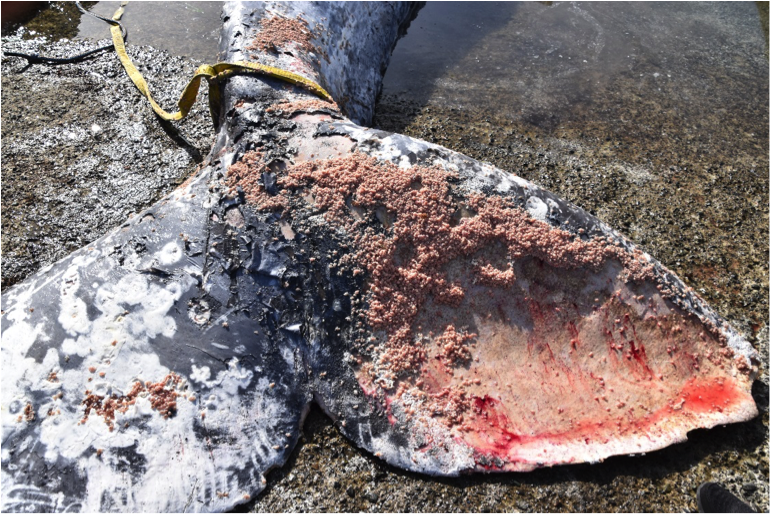
Two weeks later, another, off Tofino. Then the islands of Haida Gwaii, where a total of six would wash ashore this year. The epic migration the whales make every spring — more than 10,000 kilometres from breeding lagoons in Mexico to a summer feeding in the Bering Sea — had turned deadly.
"It was quite disturbing to see," said Paul Cottrell, regional marine mammal co-ordinator with Fisheries and Oceans Canada. "When they become compromised, their immune system is obviously not able to deal with that, and they get eaten alive."
"We had these kind of zombie whales swimming in our waters."
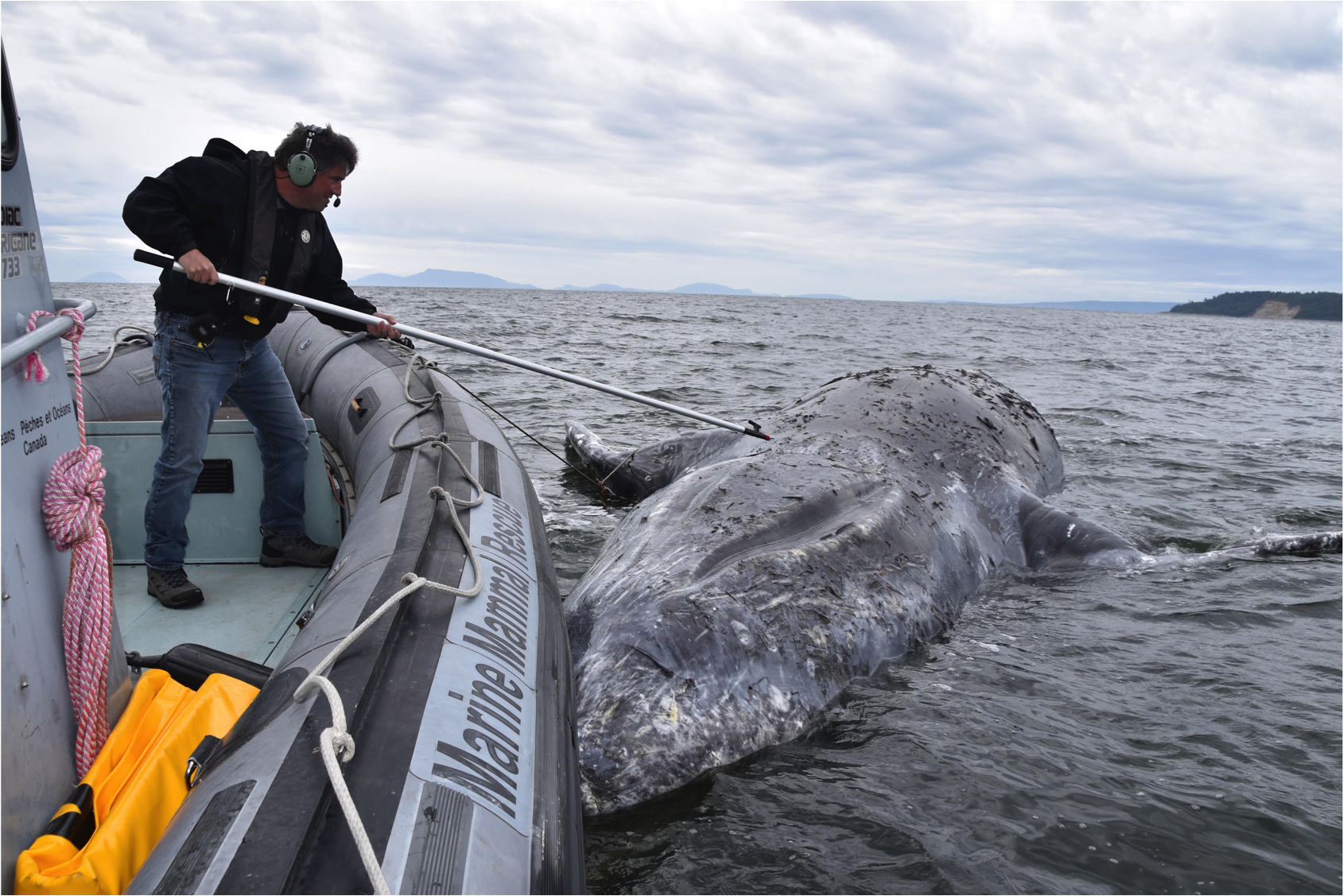
By year's end, 11 were stranded in B.C., where there are normally just one or two.
Along the migration route from Mexico to Alaska, the toll reached 214 dead whales — and those are just the ones that washed up. The true die-off is unknown, possibly between 1,000 and 2,000 whales.
The underlying cause — whether an undiscovered pathogen, or the changing climate of the Arctic where they feed — remains a mystery.
In May, the U.S. National Oceanic and Atmospheric Administration declared an "unusual mortality event," or UME, and launched a special investigation with a cross-border team of scientists. Since then, the issue has faded from the headlines, but the scientists have quietly continued that work.
And as recently as last month — when the migrating whales should be "fat and healthy" on their way south — skinny whales were still washing up dead.
"We're really worried about next year given that we're seeing animals die on the southern migration." –Paul Cottrell
A late arrival
The first sign of a problem wasn't in Canadian waters last spring, but Mexico the year before.
Grey whales on the West Coast spend their winters in Mexican waters; hundreds gather at a time in the warm-water lagoons of the Baja peninsula, breeding and raising young.
"You will see whales blowing in every direction," said Steven Swartz, co-director of the Laguna San Ignacio Ecosystem Science Program, who has studied whales there since the 1970s.
Grey whales swim in Bahia Magdalena, Mexico, where they gather in large groups to breed in the winter. (Laguna San Ignacio Ecosystem Science Program, a project of the Ocean Foundation.)
His team saw the early hints that something was off.
Normally, the first grey whales start to arrive at the lagoons around mid-January, but in 2018 they were several weeks behind schedule. They arrived skinnier than normal, and had fewer calves.
In 2019, the same pattern emerged. Scientists on Swartz's team documented in photographs that about a quarter of the whales without calves were in poor condition, with deep indentations where there should be blubber, which is "really unusual," he said.
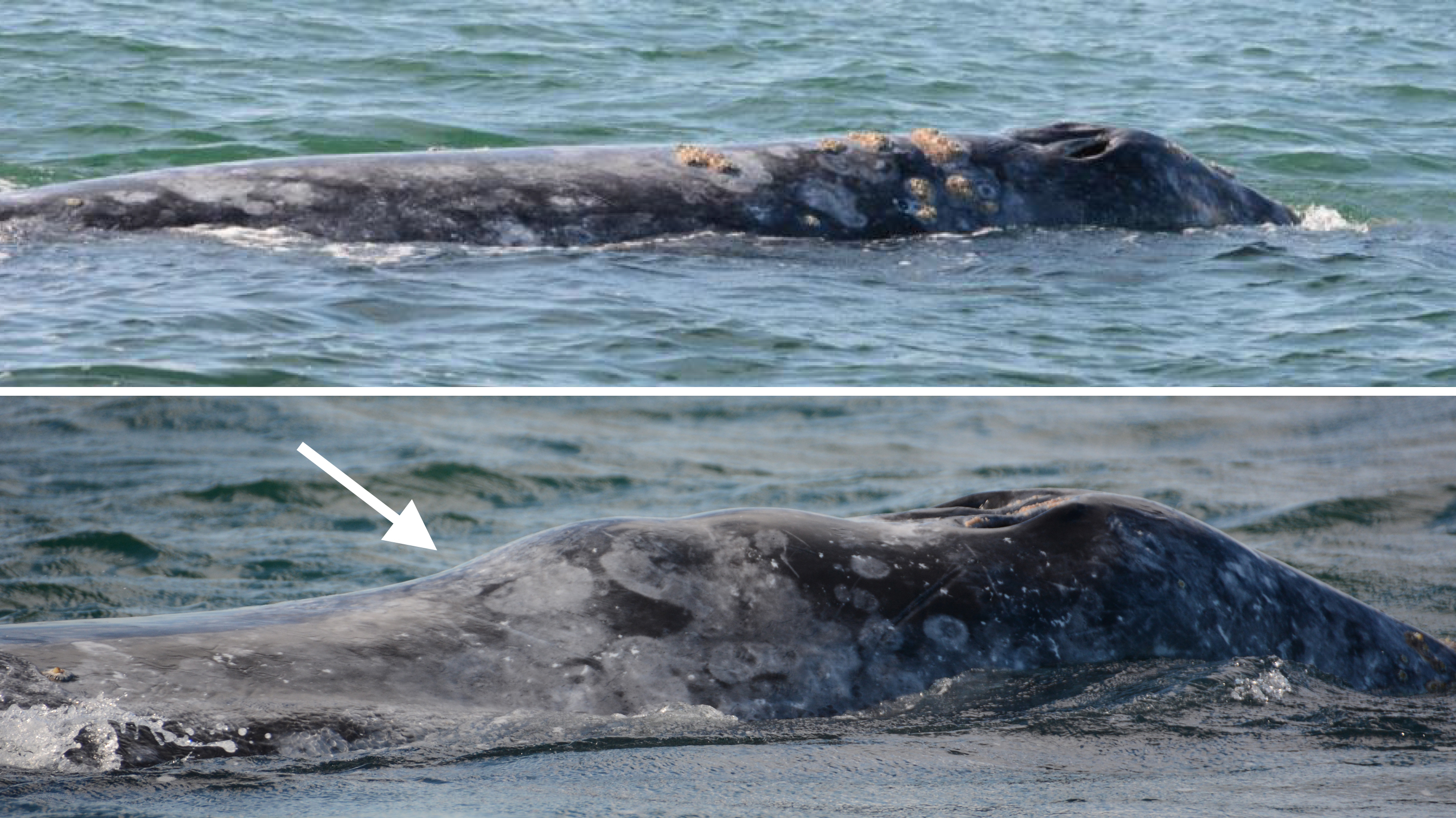
"They should be arriving in Mexico for their winter breeding season after just finishing a summer of feeding in the higher latitudes in the Arctic, so they should be pretty fat," he said.
"But they weren't, so that was alarming."
In January 2019, the strandings began. First in Mexico, then up the coast of California, Oregon and Washington as the struggling whales tried to make their way north.
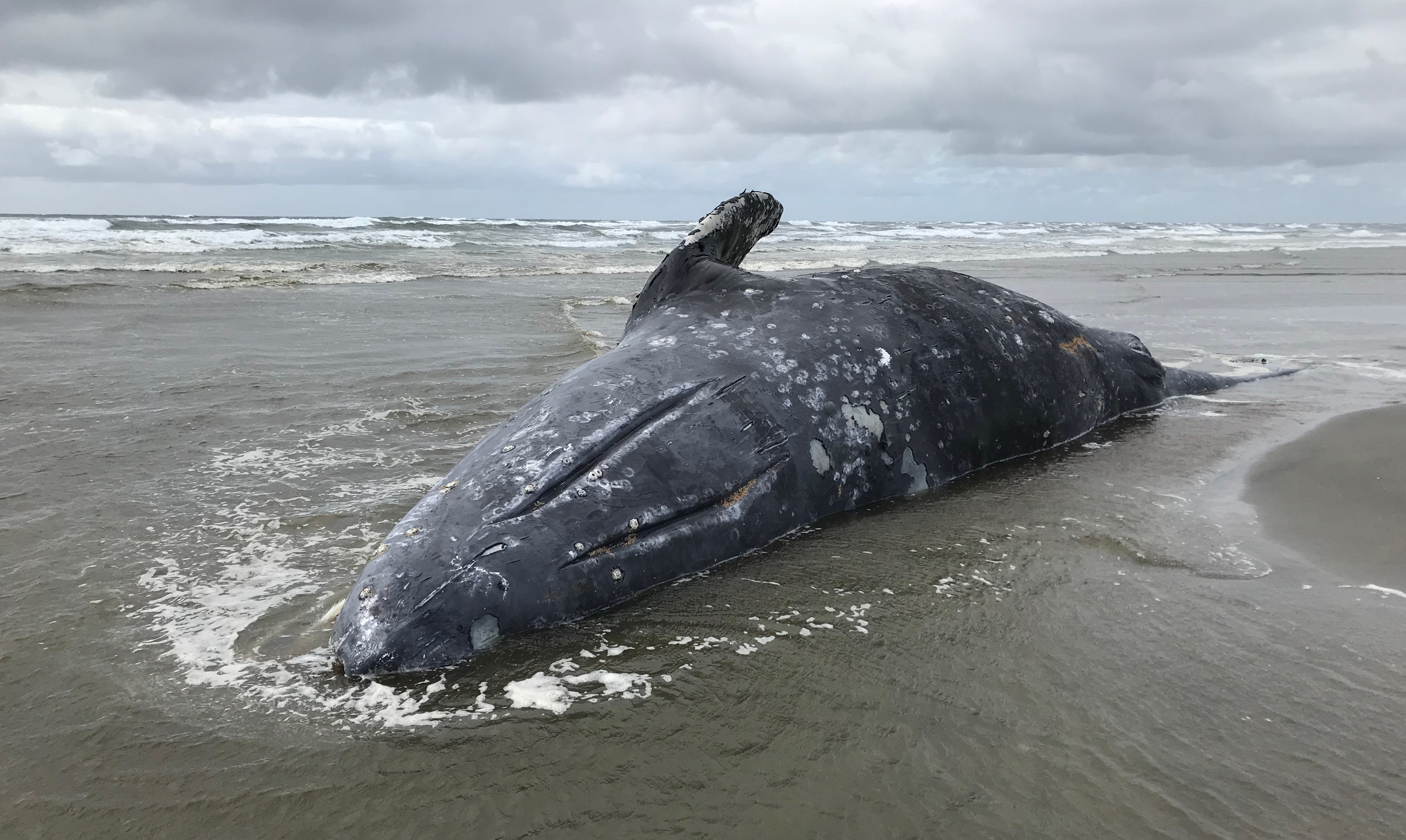
It felt very familiar for John Calambokidis, a research biologist who is part of the UME investigation team and founder of Cascadia Research in Olympia, Wash.
"This is really feeling a lot like 1999," he said. "That was the first thing that struck me."
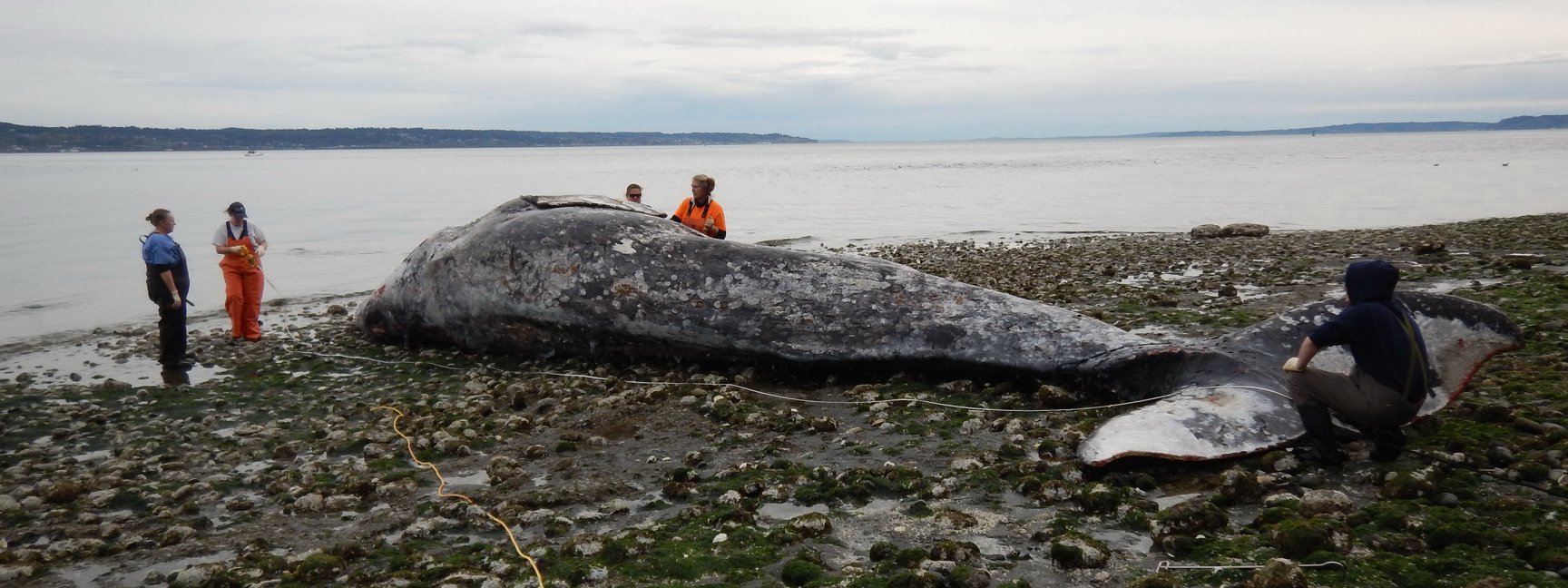
'No smoking gun'
This isn’t the first time grey whales have washed up dead by the hundreds.
Calambokidis and Swartz both remember 20 years ago — the last UME for grey whales — when 283 stranded in 1999, and another 368 the following year.
Then, as now, the population was above 25,000 whales.
And then, as now, the animals appeared to be starving, said Calambokidis. Not just the normal skinny that happens as fat stores are used on a long migration, but so emaciated that when they cut into the skin during a necropsy, the blubber felt dry.
"I know it's kind of hard to imagine, a blubber area without any oil in it."
Necropsies in B.C. showed the same thing, but experts don't know why.
"There's no smoking gun with all these dead animals, except that the vast majority are skinny," said Cottrell.
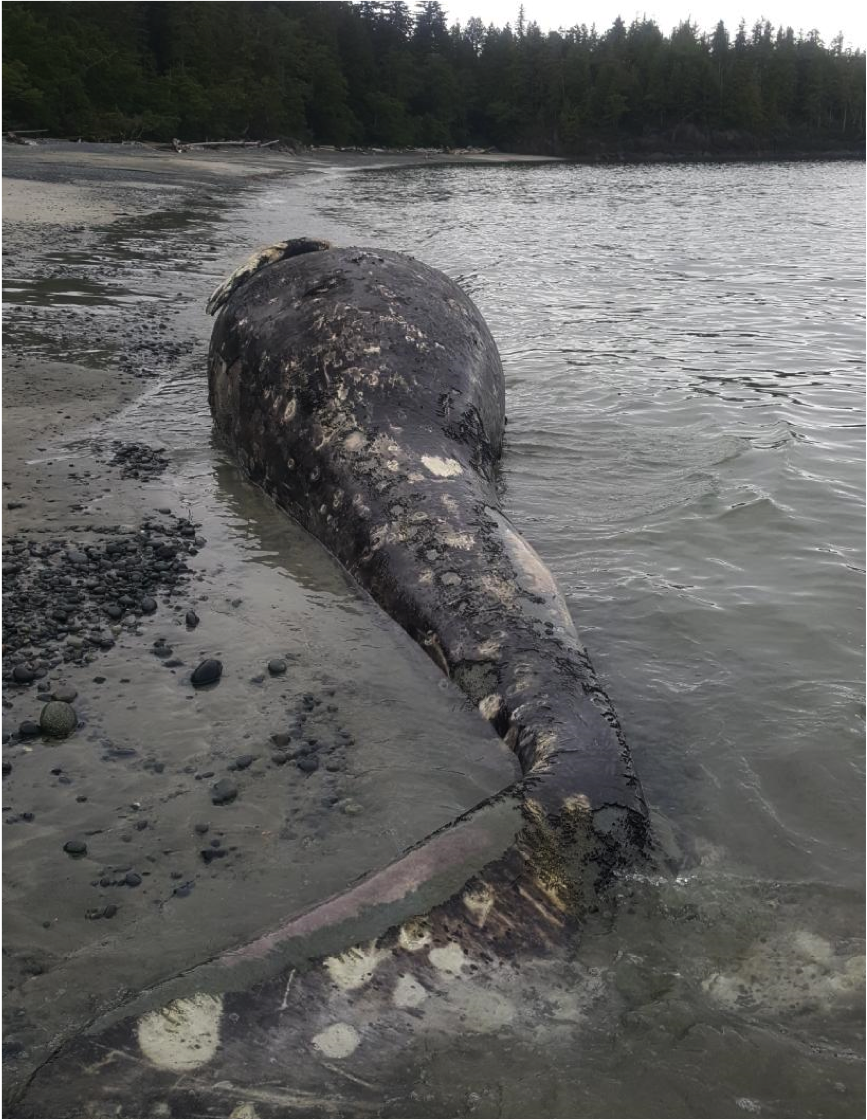
'This could be an indicator'
The obvious question is whether the whales are getting enough food in the Arctic.
One theory is the whales hit a kind of natural ceiling in terms of population size — what ecologists call "carrying capacity" — where there are more whales than food.
But it's probably not that simple, said Sue Moore, an oceanographer at the University of Washington who is leading the part of the cross-border investigation looking at ecosystem issues.
Grey whales eat a lot of different things over a vast area of the ocean, and if food isn't abundant in one place, they can shift between "hot spots," said Moore, making them less vulnerable to change.
They also eat low on the food chain. They use their baleen, a comb-like plate in their mouth, to strain shrimp-like amphipods and other creatures from sediment on the ocean floor, as well as filter tiny animals in the water. But there just isn't good data on those food sources.
"The story," said Moore, "is anything but clear."
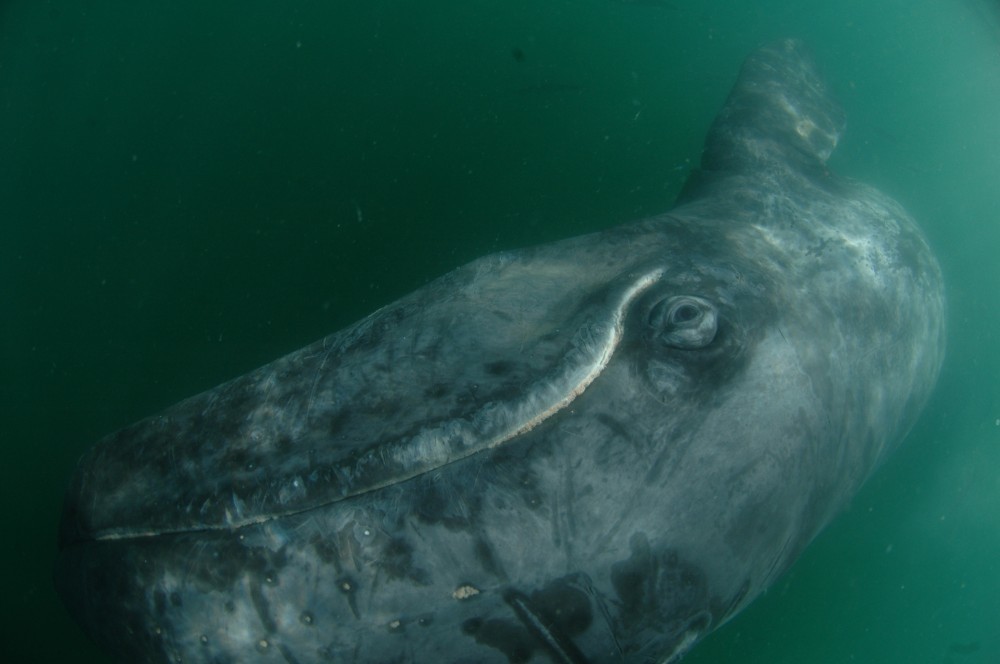
What is clear is the Arctic is warmer, with Bering Sea ice melting a month early the past two years, and that's sure to do something to the food grey whales — and others — rely on.
"This could be an indicator of broader problems," said Calambokidis. "We know that tremendous changes are occurring in the Arctic ecosystem."
That’s one reason the grey whale die-off is important to understand beyond the whales themselves, which are considered at risk of becoming threatened or endangered in Canada.
If something is happening to the base of the Arctic food system, there may be other consequences that have yet to be discovered.
"These guys are kind of the canaries in the coal mine with these large whales," said Cottrell. "It could affect other large whales as well."
WATCH | Drone captures mother and calf grey whale:
Researchers use a drone to take aerial images of a mother and calf grey whale, that can be analyzed to learn which whales are in poor condition. (Laguna San Ignacio Ecosystem Science Program, a project of The Ocean Foundation.)
Preparing for 2020
The biggest clues might be in the whales themselves.
Scientists from Canada, the U.S. and Mexico are analyzing samples from the dead whales of 2019, and preparing for what might come in 2020.
Among the tasks: decide which toxins to test for and look for diseases that could be compromising the whales. And they're standardizing how to measure stranded whales, which is not as easy as it sounds because a decomposing carcass has to be "deflated" first, said Cottrell.

There are troubling signs the die-off is not over.
Reports from summer feeding appeared fine, but then in November — as the whales headed south — another thin animal stranded in B.C., and one in California.
"We're really worried about next year given that we're seeing animals die on the southern migration," said Cottrell.
"They're supposed to be fat and healthy and going down to the lagoons for breeding."
Swartz's team will arrive next month on the lagoons of Mexico, clearing out spiders and snakes from the field station in preparation to document the whales' arrival.
He is concerned they'll again be late, and skinny, with few calves — but also hopeful for an animal that's survived whaling and ice ages and whose scientific name means "robust."
"I tell my students, they're named Eschrichtius robustus for a reason: they're tough."
